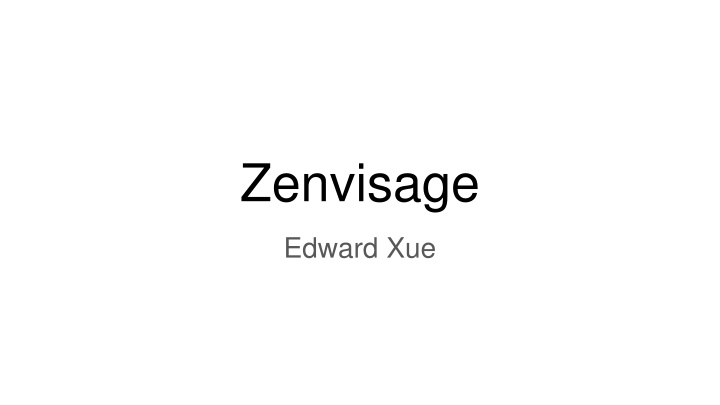
Automating Visual Data Exploration with Zenvisage and ZQL
Explore how Zenvisage and its Query Language (ZQL) revolutionize visual data exploration by automating the search for desired visual patterns. Learn about ZQL's high-level overview, table-based queries, process columns, and user-defined functions for efficient data analysis.
Download Presentation

Please find below an Image/Link to download the presentation.
The content on the website is provided AS IS for your information and personal use only. It may not be sold, licensed, or shared on other websites without obtaining consent from the author. If you encounter any issues during the download, it is possible that the publisher has removed the file from their server.
You are allowed to download the files provided on this website for personal or commercial use, subject to the condition that they are used lawfully. All files are the property of their respective owners.
The content on the website is provided AS IS for your information and personal use only. It may not be sold, licensed, or shared on other websites without obtaining consent from the author.
E N D
Presentation Transcript
Zenvisage Edward Xue
Motivation Visual data exploration can be tedious, manual trial and error process Other Visual Analytic tools support one visualization at a time Finding patterns in large datasets is tough A lot of data exploration falls into a few key operations Composing visualization collections Filtering visualization collections Comparing visualizations Sorting visualizations What if we can automate this search for desired visual patterns?
Zenvisage Query Language (ZQL) ZQL treats visualizations as first class citizens Can be assigned to a variable Can be passed as an argument Can be returned from a function Can be modified Allows users to operate on collections of visualizations in a declarative fashion
ZQL High Level Overview A ZQL Query consists of one or more rows Each row has well defined columns: Name column Columns that define a collection of visualization X,Y,Z Constraints Viz Process column Operates on collections of visualizations Filtering, sorting, comparing
ZQL: Process Column The power of ZQL lies in the ability to operate on collections of visualizations in an effective manner ZQL uses dimension-based iteration over collections of visualizations Each column has an iterator called an axis variable
Process Function Questions What are some interesting t functions? What properties or patterns can these t functions express? What do different distance functions show? How do we know what distance metric is best? Our process structure can allow for user defined functions. What would be some useful functions that do not fall under the two functional primitives ZQL supports?
General ZQL Questions What are some limitations of ZQL? How to improve those limitations? How easy is it to understand a ZQL query?
Query execution ZQL queries are parsed and executed by the back end The backend translate ZQL queries into a query plan in the form of a directed acyclic graph. Two kinds of nodes: Collection Nodes Process Nodes
Optimization Techniques Parallelization Some nodes can run in parallel Concurrent SQL queries Speculation Fetch sql queries ahead of time by using superset of the necessary info for a collection node Query Combination Overall runtime depends on number of queries being issued Combine queries to reduce overall runtime Cache Aware Execution Cache optimizations for process nodes (multiple nested loops) Tries to maximize the time blocks of data remain in L3 cache
Optimization Techniques Why no improvements with parallelism?
